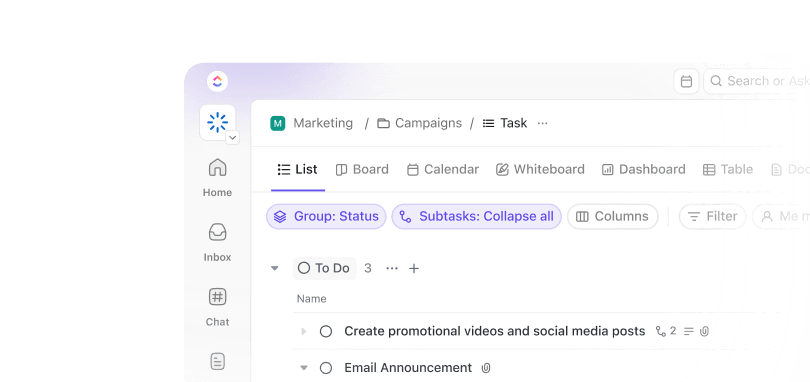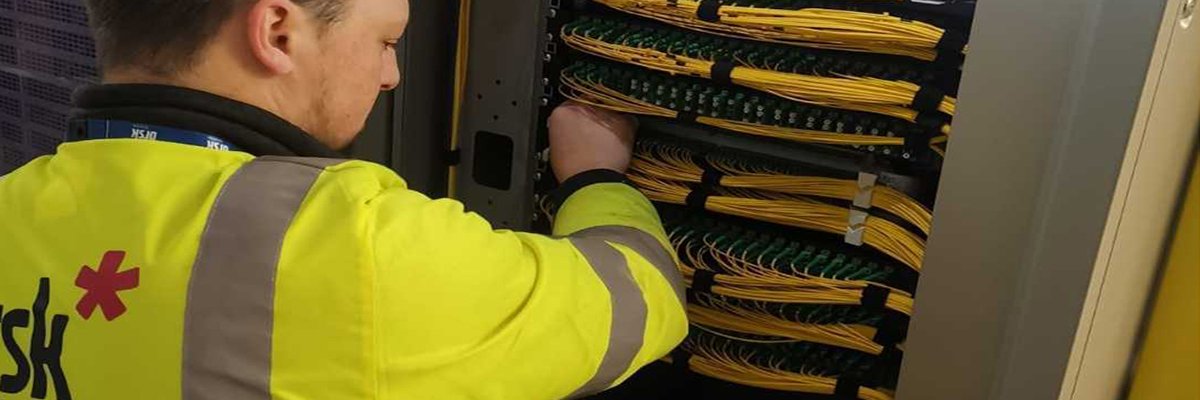Looking for the best collection tracking software?
Whether you’re collecting physical items like inventory, artifacts, or personal memorabilia—or gathering data through forms and surveys—the right tool can help you stay organized, accurate, and efficient.
In this blog, we’ve rounded up the top tools for tracking both tangible collections and digital data. From cataloging objects to managing form submissions and syncing everything in one place, these solutions are built for data analysts, collectors, and researchers who need more than just spreadsheets.
🔎 Did You Know? The British Museum manages over 8 million objects and uses a custom digital cataloging system to track provenance, condition, and exhibition history across centuries.
Best Collection Tracking Software
Best Collection Tracking Software at a Glance
| Tool | Best for | Key features | Pricing* |
| Efficient data collection tracking | Forms, Custom Workflows, Dashboards, Real-Time Collaboration, Task Automation, AI summaries with Brain | Free forever; Customizations available for enterprises | |
| Sortly | Inventory management for small businesses | Barcode scanning, real-time stock updates, mobile sync, photo uploads | Paid plans start at $49 |
| Kolekto | Managing and selling your collection | Custom fields, marketplace access, Excel export, item tagging | Paid plans start at $7/month |
| CatalogIt | Creating a detailed product catalog | Mobile photo capture, multi-user access, cloud system, web display integrations | Free; Paid plans start at $14 |
| iCollect Everything | Personal collectibles | Barcode scan, customizable fields, device sync, backup/export | Paid plans start at $30 |
| Tellico | Free collection management | Templates for books/games/stamps, auto data fetch, flexible record editor | Free |
| PastPerfect | Linking audio to artifacts | Object cataloging, audio/photo attachment, contact management, donor tracking | Paid plans start at $745 |
| Artwork Archive | Online exhibitions and asset history | Maintenance reports, online showcases, QR codes, financial tools | Paid plans start at $34 |
| Argus | Managing both physical and digital collections | Multimedia curation, engagement reports, custom templates, automation | Custom pricing |
| S-Museum | Web-based museum collection management | SPECTRUM compliance, multilingual support, structured terminology, team workflows | Custom pricing |
The 10 Best Collection Tracking Software
How we review software at
Our editorial team follows a transparent, research-backed, and vendor-neutral process, so you can trust that our recommendations are based on real product value.
Here’s a detailed rundown of how we review software at .
Let’s find a collection tool compatible with your work requirements.
1. (Best for efficient data collection tracking)

, the everything app for work, stands out as the ultimate data collection software by centralizing every step of your collection process—gathering, organizing, tracking, and collaborating—into one seamless workflow powered by AI.
At the core of ’s data collection capabilities are Forms, which lets you capture information from any source and instantly turn submissions into actionable tasks. Whether you’re running surveys, collecting feedback, or managing requests, Forms ensures your data flows directly into your workspace—no manual entry required.


But collecting data is just the beginning. Tasks allow you to tailor every step of your process, from intake to review to completion. Customize tasks with Custom Fields to capture exactly the information you need. With Automations, you can set up rules to automatically assign, update, or move tasks based on your data, saving time and reducing manual errors.
Check out this video to learn more about Automations👇
With Views, you can visualize and organize your collected data in the way that works best for you—whether that’s a Table View for spreadsheet-style management, Board View for Kanban workflows, or Calendar View for timeline tracking.
All your collected data is stored in one place with centralized storage, making it easy to find, share, and secure information. Attach files, add comments, and link related tasks so nothing slips through the cracks.


To make sense of your data, Dashboards provide powerful visualizations—charts, graphs, and widgets—that turn raw information into actionable insights. Monitor trends, track progress, and share reports with stakeholders in just a few clicks.
You can ask ’s AI, Brain to analyze form submissions and generate a summary of customer sentiment.
Here’s an example of Brain at work 👇


best features
- Capture information from any source with Forms
- Build customizable workflows to automate your collection process
- Store all your data securely with centralized storage
- Visualize and analyze data using Dashboards
- Automate repetitive actions with Automations
- Organize and manage collections with Custom Fields for tailored data tracking
limitations
- Beginners can feel overwhelmed due to the expanse of features
pricing
free forever
Best for personal use
Free Free
Key Features:
unlimited
Best for small teams
$7 $10
Everything in Free Forever plus:
business
Best for mid-sized teams
$12 $19
Everything in Unlimited, plus:
enterprise
Best for many large teams
Get a custom demo and see how aligns with your goals.
Everything in Business, plus:
* Prices when billed annually
The world’s most complete work AI, starting at $9 per month
Brain is a no Brainer. One AI to manage your work, at a fraction of the cost.
Try for free
ratings and reviews
- G2: 4.7/5 (9,000+ reviews)
- Capterra: 4.6/5 (4,000+ reviews)
What are real-life users saying about ?
Chrissie Boyle, a Senior Campaign Manager at Penske Media Corporation, says:
2. Sortly (Best for inventory management)
If you are a small business owner struggling to keep track of your inventory levels, try Sortly. With a quick barcode scan, you can update stock levels instantly.
The app also organizes items neatly into folders by location and type, making it easy to find supplies. And if you are low on stock, a low-stock alert will appear, prompting you to reorder before you run out.
Sortly best features
- Generate a real-time report to analyze usage trends and budget for the next quarter
- Sync the most recent updates from mobile devices for different locations
- Upload high-resolution photos to track each item visually
Sortly limitations
- The site shows wrong numbers if several users are updating it simultaneously
- Category options are limited for evolving businesses
- Your Sortly QR code can come out broken
Sortly pricing
- Advanced: $49/month per user
- Ultra: $149/month per user
- Premium: $299/month per user
- Enterprise: Custom pricing
Sortly ratings and reviews
- G2: 4.4/5 (20+ reviews)
- Capterra: 4.5/5 (800+ reviews)
What are real-life users saying about Sortly?
A Capterra reviewer says:
3. Kolekto (Best for managing and selling your collection)
As a passionate collector, manage your growing collection with Kolekto. With a few taps, you can add a new category and custom attributes to tailor the inventory to your needs. Using your phone’s camera, snap high-quality photos and instantly link them to each item.
Kolekto best features
- Export the entire collection into an Excel file for easy backup and analysis
- Browse Kolekto’s dedicated Marketplace and connect with like-minded collectors worldwide
- Conduct a quick scan of an asset tag to pull up detailed records for an organized space
Kolekto limitations
- Kolekto offers a monthly or annual subscription, which might not be ideal for those looking for multiple pricing tiers
- Lacks built-in advanced analytics for tracking trends or valuations over time
- Finding buyers or sellers for niche collectibles may still require external platforms
Kolekto pricing
- Monthly plan: $7.54/month per user
- Mobile app: $9.43/month per user
Kolekto ratings and reviews
- G2: Not enough reviews
- Capterra: Not enough reviews
📮 Insight: 74% of employees use two or more tools just to find the information they need—while jumping between emails, chat, notes, project management tools, and documentation. This constant context-switching wastes time and slows down productivity.
As the everything app for work, unifies all your work—email, chat, docs, tasks, and notes—into a single, searchable workspace, so everything is exactly where you need it.
4. CatalogIt (Best for creating a product catalog)
With CatalogIt, you open the app, capture an item with your phone’s camera, and instantly create a detailed entry. For example, you can photograph an antique vase and add its description, historical context, and condition updates—all from a single interface.
Whether preserving history or managing everyday inventory, CatalogIt keeps every detail at your fingertips.
CatalogIt best features
- Manage collections with multiple users across museums, archives, and institutions
- Use the CatalogIt HUB or API integrations to display collections on your website or public platforms
- View or edit information from anywhere using the cloud system
CatalogIt limitations
- CatalogIt can freeze when generating reports
- The Search Property Filter function is complicated to use
CatalogIt pricing
- Free forever
- Museum: $54/month per user
- Personal: $14.99/month per user
- Organization: $54/month per user
- Conservator: $54/month per user
- API, WordPress Plugin, and iframe integration: $35/month per user
CatalogIt ratings and reviews
- G2: 4.9/5 (20 reviews)
- Capterra: 4.9/5 (60 reviews)
What are real-life users saying about CatalogIt?
A G2 review says:
5. iCollect Everything (Best for personal collectibles)
You launch iCollect Everything, ready to organize your ever-growing collection. How will you proceed? With a quick barcode scan, instantly catalog a new item—a rare comic book, vintage vinyl, or a prized action figure.
Next, use customizable fields to add personal notes, purchase details, and estimated values. It’s as simple as that!
iCollect Everything best features
- Access and update your collection from iPhone, Android app, Mac, Windows, or the web
- Search through hundreds of entries easily to avoid accidental duplicates
- Keep your collection safe with easy data export and backup options
iCollect Everything limitations
- To add unlimited items to the app, you need to make a one-time purchase for life
- To use the desktop app, you need to purchase the complete mobile app plan
- It doesn’t offer a strong marketplace for buying, selling, or trading collectibles
iCollect Everything pricing
- Mobile app buy unlimited all: $59.99
- Each collectible unlimited: $29.99
- Desktop app: $49/year per user
iCollect Everything ratings and reviews
- G2: Not enough reviews
- Capterra: Not enough reviews
What are real-life users saying about the iCollect Everything app?
A Reddit user says:
6. Tellico (Best for free collection management)
You can choose from pre-built templates for books, video games, and stamps in Tellico or create your custom catalog. With automatic data fetching, details can be pulled from multiple sources, reducing manual entry.
The flexible entry editor lets you fine-tune records and supports various formats, such as text, checkboxes, and images.
Tellico best features
- Search multiple online databases to retrieve details without manual entry quickly
- Share and backup your collection with export options like BibTeX, CSV, and HTML
- Organize your collection by any field, such as genre, author, or year
Tellico limitations
- Limited compatibility with other collection management platforms
- Unlike cloud-based apps, updates and backups rely on user management
Tellico pricing
Tellico ratings and reviews
- G2: Not enough reviews
- Capterra: Not enough reviews
7. PastPerfect (Best for linking audio descriptions to artifacts)
Launch PastPerfect and access the Objects Catalog to enter detailed information such as Object ID, provenance, and condition. The MultiMedia Upgrade can attach high-resolution images and link audio descriptions to the artifact’s record.
For organized client relations, navigate to the Contacts Management section, update donor profiles, and track recent contributions. You can also build fundraising templates to set up campaigns in minutes.
PastPerfect best features
- Access donor and membership management tools within its CRM software
- Prepare for an exhibition by generating custom reports with artifact details and display locations
- Use barcode printing and scanning for efficient inventory tracking and management
PastPerfect limitations
- Users may encounter challenges in tailoring fields or modules to fit unique institutional requirements
- New users might find the system complex, requiring significant time to become proficient
- Additional costs and complexities may arise when integrating online collections or virtual exhibits
PastPerfect pricing
- Starter Package: $745
- Full Package: $870
- XL Package: $1245
- 2XL Package: $2245
PastPerfect ratings and reviews
- G2: Not enough reviews
- Capterra: Not enough reviews
What are real-life users saying about PastPerfect?
A Capterra user says:
8. Artwork Archive (Best for creating an online exhibition)
Document your newly acquired artifact in the Artwork Archive. By tracking its restoration history in the maintenance reports, you can ensure its longevity.
If unsure about the piece, use its Private Rooms feature to securely share the artwork’s details with board members before its public unveiling. Once done, generate a QR code for the piece, enabling visitors to access its digital archive with a quick scan.
Artwork Archive best features
- Access the central catalog and enter details like the artist, provenance, and valuation for a detailed overview
- Ask for payments professionally with well-managed invoices, finances, and sales reports
- Maintain historical records, purchase details, and organize finances with built-in tools
- Curate an online showcase with the Exhibition Tool, with artist interviews and historical context
Artwork Archive limitations
- While it tracks sales, it lacks advanced marketplace integrations
- Advanced features require time to master
Artwork Archive pricing
- Organizations Standard: $34/month per user
- Organizations Plus: $69/month per user
- Organizations Enterprise: $162/month per user
Artwork Archive ratings and reviews
- G2: Not enough reviews
- Capterra: 4.9/5 (70+ reviews)
What are real-life users saying about the Artwork Archive?
A Capterra review says:
🧠 Trivia: Humans aren’t the only collectors. Australian bowerbirds famously gather colorful objects (like berries, shells, and even bottle caps) to decorate their nests and attract mates. Tracking their “collections” helped scientists understand how aesthetic displays can evolve in nature.
9. Argus (Best for handling both physical and digital assets)
Catalog, digitize, and share your collections using Argus, a collections management system (CMS). Its customizable database lets curators easily track accessions, loans, and item locations while linking related multimedia for meaningful storytelling.
Institutions can organize exhibits online through the interactive public portal, allowing visitors to explore collections with advanced search and filtering options.
Argus best features
- Improve visitor experiences with high-resolution images, videos, related objects, and metadata-rich documentation
- Track user engagement, demonstrate impact to stakeholders, and generate custom reports
- Reduce repetitive tasks like data entry and inventory updates with automated workflows
Argus limitations
- Functionality while building new templates is not consistent
- This data collection software on mobile can feel clunky
- High volumes of data can make data entry difficult
Argus pricing
Argus ratings and reviews
- G2: Not enough reviews
- Capterra: Not enough reviews
10. S-Museum (Best for web-based management)
With advanced workflows, multi-user collaboration, and interoperability, S-Museum helps museums catalog, manage, and share their physical and digital collections.
Its SPECTRUM compliance ensures adherence to international museum standards, while built-in data import/export allows custom workflows. Thus, paper forms can be manually entered into the system.
S-Museum best features
- Maintain accurate, globally accessible records with multilingual support and structured terminology
- Assign role-based access to team members, ensuring secure, efficient workflows
- Handle accession, inventory, cataloging, and conservation with an intuitive, centralized system
S-Museum limitations
- While flexible, deep customization may need additional development
- Multi-institution deployment may require extensive configuration
S-Museum pricing
S-Museum ratings and reviews
- G2: Not enough reviews
- Capterra: Not enough reviews
📊 Research shows: Clean, structured data can improve decision-making speed. A tracking tool helps you get there, minus the spreadsheet chaos.
What Should You Look for in Collection Tracking Software?
Choosing the right collection tracking software can make or break your workflow. The best data collection apps make information gathering easier with features like inventory management, integrations, security, and real-time analytics. They ensure your data stays accurate, organized, and readily accessible.
Here’s what to look for when picking the perfect solution:
- Mobile-first design: Supports a mobile-friendly app to collect data even when you are on the go
- Customizability: Includes different data collection methods with diverse question types to match your research process
- Integration-rich: Connects with your existing data analysis, visualization, and reporting tools for less complex workflows
- User-friendly interface: Presents software with an intuitive and easy-to-learn interface, minimizing the learning curve for all researchers
- Real-time sync: Provides immediate access to collected data and synchronizes it to a central server for prompt analysis
💡 Pro Tip: Before choosing a tool, list all the data formats you regularly work with—then pick the software that supports seamless import/export without manual fixes.
Collect and Manage Your Data the Smart Way
Accurate data collection is the backbone of informed decision-making. Without it, errors, inconsistencies, and outdated information can lead to misplaced artifacts, poor choices, and missed growth opportunities.
With , you can streamline and simplify the entire process. Customizable forms ensure structured data collection, real-time collaboration keeps your team aligned, automation eliminates manual tasks, and powerful reporting tools provide the insights you need—all in one centralized system.
It’s time to bid adieu to scattered spreadsheets and manual errors. Sign up for for free today!


Everything you need to stay organized and get work done.










